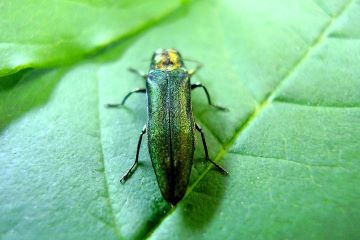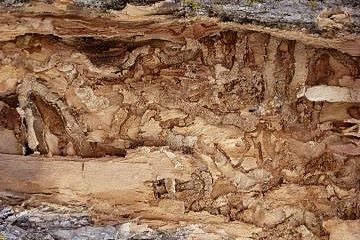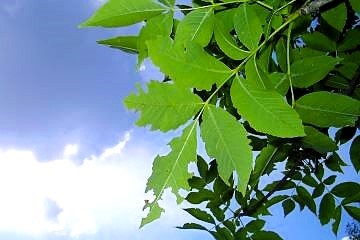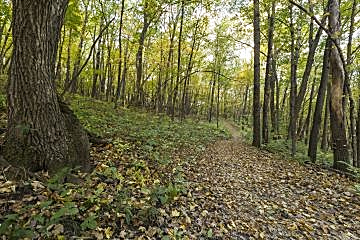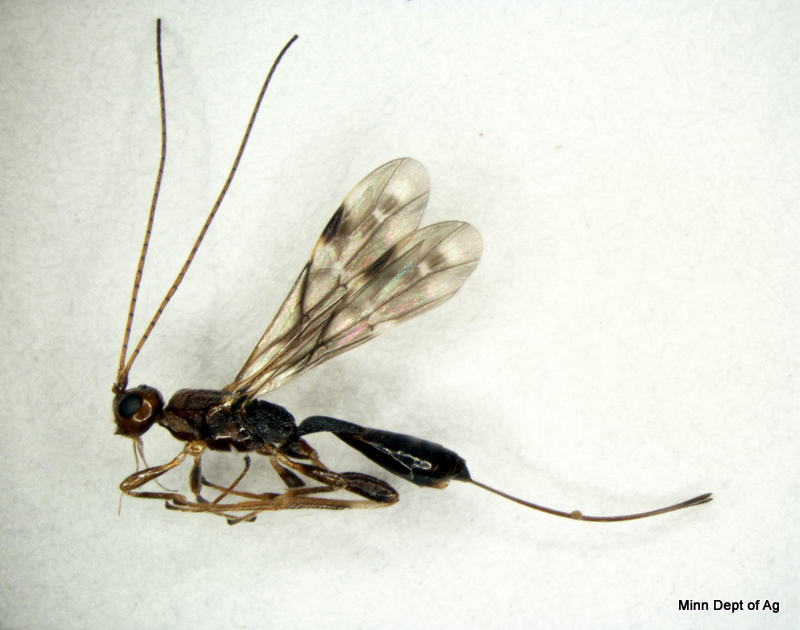
Spathius galinae Belokobylskij and Strazanac (Hymenoptera: Braconidae) are small parasitoids. Adult females locate EAB larvae under ash bark, paralyze and lay eggs on the outside of the EAB larva. Parasitoid larvae develop and consume the EAB larva. S. galinae larvae pupate inside the EAB gallery and emerge approximately one month later by chewing an exit hole through the bark. They overwinter as larvae within the host gallery. Approximately 5-12 individuals are produced per EAB larva. In the Russian Far East, S. galinae completes two generations per year with parasitism rates averaging 63%.
In 2025, the Minnesota Department of Agriculture (MDA) proposed 12 areas in Minnesota to be aerially managed for spongy moth with Btk (Bacillus thuringiensis var. kurstaki). Spongy moth is a destructive invasive pest that threatens forest health. Btk is a bacterial insecticide that kills spongy moth caterpillars and is used on high-risk, dense populations.
There is only a short window of time in the spring where Btk is effective, due to the insect’s life cycle. The MDA has not received necessary federal funds for spongy moth Btk aerial management in time and has been forced to cancel these proposed operations.
The areas with canceled Btk management are in Anoka, Carlton, Itasca, St. Louis, and Winona counties, totaling 2,752 acres. This includes canceling the proposed work in the cities of Coon Rapids, Grand Rapids, and Winona.
For decades, MDA in partnership with the United States Department of Agriculture (USDA) Forest Service’s Slow the Spread program has used aerial management to reduce the spread of spongy moth by more than 60%. In Minnesota over 1.1 million acres have been successfully aerially managed.
“Having to cancel Btk aerial management operations in these areas jeopardizes the future success of this program. Spongy moth populations in these areas will likely increase and advance quicker into neighboring areas, making future years of management more complicated and costly,” said MDA Commissioner Thom Petersen.
To prevent any human-assisted spread from these unmanaged areas, the MDA may consider implementing temporary quarantines, restricting the movement of any spongy moth life stages or woody tree material from leaving the area.
The MDA is still planning to move forward with other ways to manage spongy moth populations. We propose to manage 112,000 acres with an aerially applied mating disruption pheromone that stops the moths from reproducing. The MDA will also be conducting our yearly survey that tracks spongy moth populations in the state. Both strategies also rely on federal funding.
Overall, federal funding for these strategies is still uncertain; however, the MDA has been assured to receive initial funding for the spongy moth survey. It is still unknown if federal funds to perform aerial mating disruption operations will be distributed in 2025.
A threat to Minnesota’s forest is a threat to many Minnesotans’ livelihoods and our state’s economy. The MDA will continue to work within its state program to monitor spongy moth populations and to advocate for the best possible management strategies in the future.
###
Media Contact
Brittany Raveill, MDA Communications
651-201-6131
Brittany.Raveill@state.mn.us
This report provides monthly updates on the number of dairy farm permits recorded by the MDA Dairy Inspection Program.
Minnesota’s continuous living cover crops have received a boost to further their advancements across the state. The Minnesota Department of Agriculture (MDA) has awarded a total of $431,637 to 10 new projects under the Developing Markets for Continuous Living Cover Grant. These grants help develop enterprises, supply chains, and markets for continuous living cover crops and cropping systems in the early stage of commercial development.
Funding was provided to the MDA by the Minnesota Environment and Natural Resources Trust Fund and state’s General Fund.
Continuous living cover (CLC) refers to agricultural systems in which there are living plants and roots in the ground throughout the entire year. This can take many forms, from winter cover crops sown between summer annuals to agroforestry practices, perennial forage crops, perennial biomass crops, and perennial grain production. This includes but is not limited to regenerative poultry silvopasture systems, Kernza® perennial grain, winter camelina, and elderberry.
CLC crops have been shown to enhance water and soil quality, sequester carbon, build soil health, and provide greater biodiversity and pollinator habitat. Significant environmental benefits of these crops will result from widespread production, which requires robust value chains and markets.
| Organization Name | Project Summary | Award Total |
|---|---|---|
| Bang Brewing Company LLC | Increase the percentage of Kernza® in their beer to meet the Perennial Percent™ label and improve marketing. Purchase and convert a van to sell beer as the sole brewer at Mill City Market. | $45,000 |
| Estling Farms Inc | Develop a dedicated seed cleaning line for emerging continuous living cover crops. A new seed cleaning line will reduce the cost of CLC crop seed for farmers in northern Minnesota. | $45,000 |
| Midwest Elderberry Cooperative | Improve the developing regional hub for harvested American elderberries by purchasing a used refrigerated container for storage and paving the driveway to accommodate large trucks. | $45,000 |
| Midwest Hazelnuts LLC | Purchase the equipment, supplies, and services needed for one aggregation station at a Midwest Hazelnuts LLC Go First Farm in Minnesota. | $44,772 |
| Perennial Pantry | Create marketing content and strategies to enhance capacity and increase sales of CLC products. | $45,000 |
| Perennial Promise Growers | Continue market expansion for Kernza® and value-added products through customer lead generation/qualification/cultivation, provision of samples to prospective users, placement and fulfillment of orders, post-sale customer service, and coordination with value-added partners. | $45,000 |
| Regenerative Agriculture Alliance | Purchase and distribute improved Midwest Hazelnut LLC plant material directly to growers involved with the Poultry-Centered Regenerative Agroforestry ecosystem. This project will also fund training opportunities for growers. | $35,865 |
| Sturdiwheat Inc. | Modify existing recipes to include 1-5% perennial grain flour and update the packaging design to highlight the perennial grains. | $45,000 |
| SUN Consulting Inc. | Build a self-propelled, mound bed cutter to sever the new woody stem of hazelnuts below the new root base, to harvest 2-year-old, farm-ready, bare root “whips” from propagation beds. | $36,000 |
| Tree Range Farms | Increase operational capacity to market the silvopasture poultry to Minnesota schools, communities, retailers, and restaurants. | $45,000 |
###
Media Contact
Allen Sommerfeld, MDA Communications
651-201-6185
Allen.Sommerfeld@state.mn.us
